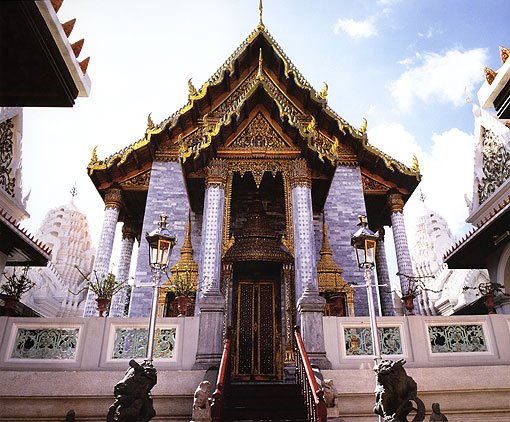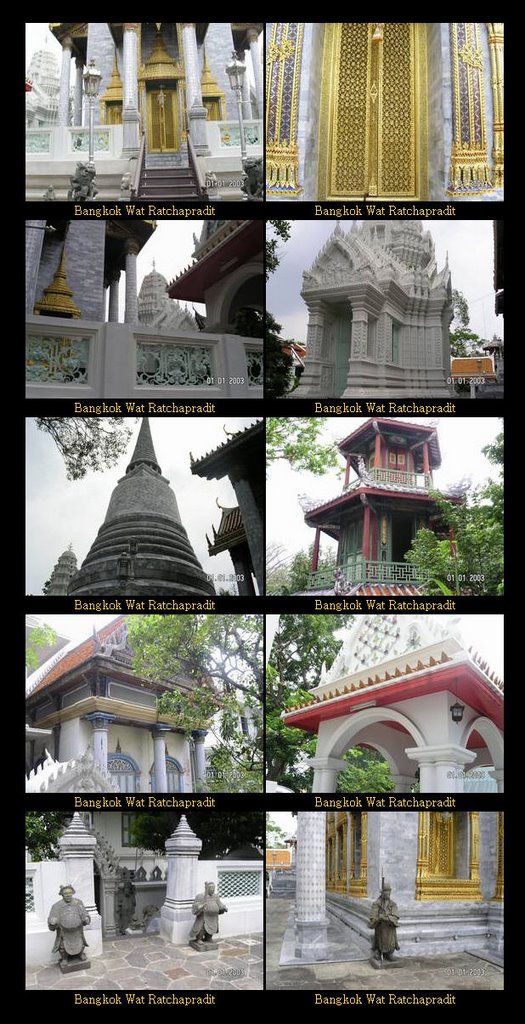วันพฤหัสบดีที่ 19 กรกฎาคม พ.ศ. 2550
WAT RATCHAPRADIT
The site of this temple was originally a coffee plantation. King Rama IV believed that traditional Royal ceremonies in the city required three temples, Wat Ratchaburana, Wat Mahathat and Wat Ratchapradit. As Bangkok had neither a Wat Ratchapradit nor a Thammayut Nikai temple near the Grand Palace, the king bought the land to give to the Thammayut sect to build the temple. S
Inscriptions of King Rama IV: There are two on stone slabs behind the wihan. The first, dated 1864, announces the building of the temple, the second, the laying of the foundation stone in 1865.
Wihan: Decorated with marble, mother-of-pearl and carved wood. Gateways and windows are decorated with stucco crowns, door and window frames with Chinese pearl. There are murals of Royal ceremonies and pictures of a solar eclipse.
Phra Puttasihingkhapatimakorn: A copy of Phra Putthasihing seated on Phra Putta-asana where the ashes of King Rama IV are kept.
Prasat Yod Prang: Two of these are in Khmer style and the front of the arch is decorated in stucco.
Khmer Prang: Contains the ashes of the Supreme Patriarch (Sa) and two later abbots.
Belfry: Decorated with Chinese tiles and coloured pottery.
Inscriptions of King Rama IV: There are two on stone slabs behind the wihan. The first, dated 1864, announces the building of the temple, the second, the laying of the foundation stone in 1865.
Wihan: Decorated with marble, mother-of-pearl and carved wood. Gateways and windows are decorated with stucco crowns, door and window frames with Chinese pearl. There are murals of Royal ceremonies and pictures of a solar eclipse.
Phra Puttasihingkhapatimakorn: A copy of Phra Putthasihing seated on Phra Putta-asana where the ashes of King Rama IV are kept.
Prasat Yod Prang: Two of these are in Khmer style and the front of the arch is decorated in stucco.
Khmer Prang: Contains the ashes of the Supreme Patriarch (Sa) and two later abbots.
Belfry: Decorated with Chinese tiles and coloured pottery.
สมัครสมาชิก:
บทความ (Atom)

